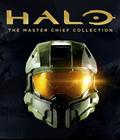Buy Halo: The Master Chief Collection
It's been nearly a year since the launch of a new generation of consoles, and thus far, game companies seem keen on remastering titles from the previous console generation. Newer versions of games like Tomb Raider and Sleeping Dogs have sprung up with improved graphics and all of the DLC. Indie games have also hopped on the bandwagon, and the trend looks like it'll continue for a while longer. Microsoft is doing things a little differently with Halo: The Master Chief Collection, which is both a remastering and a compilation of the series.
As the title suggests, The Master Chief Collection consists of the main numbered Halo games and brings them all to one platform. Xbox One owners can play the game to prepare for Halo 5: Guardians, which is scheduled for next year. All four games have been programmed to run at 1080p and 60fps, and they're all packaged with their respective DLCs. Spartan Ops, which was originally part of Halo 4, will be available for download in December. Since the compilation focuses on Master Chief, the other games in the series — Halo 3: ODST, Halo Reach and Halo Wars— remain on the Xbox 360 (for now).
Originally released in 2001, Halo: Combat Evolved is the first game in the collection. In the future, humans are waging a long-running war against an alien collective known as The Covenant, and the human race isn't winning. The story starts as the spaceship Pillar of Autumn makes a blind jump while falling back from Covenant forces. Admiral Keyes asks everyone to evacuate and land on a recently discovered mechanical ring that's orbiting a nearby planet. He also awakens Spartan 117, also known as Master Chief, and tasks him with protecting Cortana.
This game established some of the series' hallmarks. The idea of a rechargeable shield is solidified here, emphasizing cover and planning out small, controlled assaults rather than the run-and-gun style that was popular when the game was released. Using vehicles — something that was unheard of at the time — is introduced, though they're still treated as special moments. Both enemy and ally AI is believable, though allies tend to be a little less fragile than the lowly grunts.
What's included here is a variation of Halo: Combat Evolved Anniversary, which was a remake that was issued for the game's 10th anniversary in 2011. The game is faithful to the original Xbox title but still includes the Xbox 360-specific tweaks. Skulls can be activated as optional modifiers, which range from confetti appearing when you score headshots to a severe reduction in ammo. The title retains the ability to change between the original graphics and the remade ones, so it's easy to initiate before-and-after comparisons. Animations may not have changed, but the extra polygons in the character models, the new textures, and the lighting effects in the environments make the game look good.
As far as the port of the remake goes, the boost in resolution and frame rate is positive. Textures aren't as clean as they could be, especially when viewing the originals, but they still look pretty nice at higher resolutions. The frame rate boost makes the game feel faster, but it doesn't throw off your timing. The extra smoothness in the frame rate jump is appreciated and worth checking out for fans of the original. The only place where the frame rate seems to go below the 60fps mark is during cut scenes that include more moving elements and cinematic angles. It doesn't affect gameplay, but it means the system doesn't feature 60fps at all times.
Originally released in 2004, Halo 2 is the second game in the collection. Since this is the 10th anniversary of the title, it can be considered Halo 2: Anniversary. Unlike the first game, this title tells two stories in parallel. The Covenant has recovered from the failed attacks and is set to invade Earth, and Master Chief is about to receive commendations for his bravery. Meanwhile, one of the Covenant Elite is on trial for failing on Halo. He's stripped of his rank, placed under the command of the high council, and given the name of The Arbiter. The paths of Master Chief and The Arbiter will cross as they work to uncover the threat to both factions.
For those who remember the story of the second game, there is a small change. In the beginning, you get a bonus cut scene that introduces Agent Locke, one of the major characters in "Halo: Nightfall" and Halo 5. He asks The Arbiter about Master Chief, setting up the game as a retelling of events. It's meant as a nod to an upcoming character in the universe, and it doesn't change things.
From a gameplay perspective, the mechanics feature changes from the original formula that later become staples of the series. The shield recharges at a faster rate, but the health meter is gone. More guns are introduced to add some variable firepower and firing rates to the mix, but the pistol is toned down a lot to be average instead of overpowering. The sword is the standout weapon because it has the best melee damage in addition to homing capabilities for a rush attack. Also, vehicle jacking is now an option, as every vehicle in the game can be boarded or destroyed.
The visuals are also much improved in this Anniversary edition. The graphics can be changed on the fly for the campaign mode, so you can easily switch between the original Xbox graphics and the Xbox One graphics. The new textures and geometry look gorgeous, with some great color and lighting and particle effects that complement the game without being excessive. Textures are clean, and the amount of detail is tremendous. The animations are improved but are still reminiscent of improvements that are layered on an older game. They're still pleasing to the eye, and the frame rate is much steadier during busy scenes and cut scenes.
In some instances, the changes one-up what players expect from games with the Anniversary mantle. The audio can also be changed on the fly, so players can hear the newly recorded sounds while those playing with the original graphics will hear the original sound mix. Like the graphics, the sound has been enhanced greatly, and though the voices are still the same, albeit amplified to match the new soundtrack, both the music and effects sound richer than before. The cut scenes are much different, as they're now pre-rendered by Blur Studios. It matches the Halo 4 style in terms of fidelity to detail, and they're more cinematic as a result. If you don't like the drastic change, you can choose to go back to the original in-game scenes.
Halo 3, originally released in 2007, is the third game in the series and the final chapter in the original trilogy. It starts immediately after the cliffhanger ending of the prior game. You play as Master Chief, who has returned to Earth without Cortana at his side. The humans may have turned the tide, but the Covenant is getting more desperate and threatens to activate the Halos in a last-ditch effort to win the war. Now formally in an alliance with The Arbiter, you must stop the alien force that's holding Cortana captive and prevent the Covenant from destroying humanity.
Compared to the last game, the changes aren't that numerous in the single-player portion. The ability to procure equipment is the most significant difference, and there's an increase in two-handed weapons. The gravity hammer is acts like the plasma sword in Halo 2, but it's more about area of effect than inflicting a lot of damage to a single target. There are also cosmetic changes to some weapons.
Unlike the first two titles, Halo 3 hasn't received the benefit of a full remaster, so textures and character models haven't received any upgrades beyond a resolution update. The game still looks quite good; textures are clear, and vegetation and fog still come together for some impressive scenery. One improvement is in the lighting, which brightens up certain scenes. The opening scene in the jungle, for example, was pretty dark in the Xbox 360 version, and you couldn't see some faces. Unlike the previous two games, the frame rate remains solid throughout and doesn't experience any dips.
Released in 2012, Halo 4 is set four years after the events of Halo 3. It marks the last game in the compilation but is the first in the new trilogy that's being created without the involvement of the original developer, Bungie. You reprise your role as Master Chief, who's awoken by Cortana when rogue Covenant forces board your ship. You're soon sucked into a gravity well and tossed on a planet where one of the few remaining Forerunners lives. He sees humans as a threat, so he turns the remaining Covenant and Promethian forces against you. On top of that, Cortana is dying. With the odds against you, you must find a way home to save Cortana and prevent a war.
Darker story aside, the gameplay changes are more substantial, but only if you haven't played Halo: Reach. The big change is armor abilities, which add augments like jetpacks, regeneration fields, enhanced vision and so. Alien weaponry is expanded due to the inclusion of Promethian technology, and while the differences compared to the old lineup aren't that vast, they are present. Sprinting can be activated at any time, so the game feels a little faster than previous entries.
Like Halo 3, this game doesn't have the benefit of reworked textures or improved polygon models to help with the transition between platforms. Since the game was developed so late in the Xbox 360's life cycle, though, Halo 4 looks like it was originally intended for the newer platform. Textures feature a high amount of detail, and the character models are much better than in the older games. The move to 60fps produces a much smoother-looking game, and the frame rate doesn't dip. Even though the cut scenes are pre-rendered, they're still stunning. They provide a large amount of detail, and there's no visible discoloration or compression.
It's impressive that after all these years, the campaigns in all four games are still very enjoyable. The enemy AI is fun to fight against, and the tactics never feel stale. The pace is good, with enough combat to keep you on your toes but the right amount of breaks to prevent the fighting from becoming tiresome. There's a good balance of linear corridor-style gameplay and open battlefield skirmishes, and the fast loading means that deaths aren't bothersome as you wait to respawn. Players who are revisiting the campaigns will get the biggest kick out of them, but players who are experiencing them for the first time will understand why they're so well regarded.
343 Industries could have just presented each campaign as-is, but The Master Chief Collection shows that it wanted to go the extra mile. Control options can be tweaked individually or homogenized into one scheme fits all scenarios, so you won't fumble with control changes as you migrate between titles. Most of the skulls that act as game modifiers are unlocked from the beginning, so you can immediately tweak the game without playing through it first. Each campaign has leaderboards, so you can see how you rank against others. Similar to the multiplayer portion, the title awards you with medals for headshots, kills with vehicles, quick-kill streaks, and stealth kills. The game sports a whopping 4,500 Achievement points.
Playlists act as highlights for major moments in the series. Some are straightforward, such as playing through the campaign in each of the four difficulty levels. Others are more challenging, like playing on Legendary difficulty with all of the skulls active. Then there are thematic ones, like playing levels with vehicles or levels where you play as The Arbiter in Halo 2. There's also a special set of playlists that have you jumping from one game to another. There's even a playlist that has you going through each level from every game on the highest difficulty in chronological order. Like the individual campaign levels, these playlists have their own scoring and time leaderboards, and they can all be saved, so you don't have to go through them in one sitting.
That last part is important since you're playing entire chapters. Even the shortest playlist can take over an hour to complete if you're good enough to not die. They're nice additions that extend the game, but they also require playing through the same areas multiple times with little to no changes, unless you change things up with skulls.
The story and campaign are central to Halo's popularity, but multiplayer is one of the major reasons for picking up this remastered collection. It's nice to replay the classic levels, but competitive multiplayer is the meat of this compilation.
To hop into multiplayer, you must first install a 15GB update. Those who have pre-loaded the digital version should get it automatically and be ready to go at launch. Those who purchase a physical copy will be prompted when first launching the game.
Multiplayer options include co-op, competitive play, Forge and the theater mode. Every single level ever released for the four Halo games is here as well, including the two, previously exclusive to PC, Halo 2 Vista maps. A number of the Halo 2 maps will feel fresh to many players, as there has been no way to easily get them since support for the original Xbox games was removed from Xbox Live.
Just as in single-player, you have the option of using the original control setup for each game or using a universal controller layout across all four. Purists may prefer the former, but it is much easier to use a universal setup when playing through a mixed game playlist.
The most noticeable differences are apparent when playing through the Halo 2 maps, as the classic maps and the redone maps are separate entries. Unlike the single-player mode, where you can switch between the old and new looks on the fly, you can only choose one at a time here. All of the remade maps are true to their inspiration, though there are some small tweaks for gameplay reasons.
We weren't able to try out matchmaking in time for the review because that server was not yet live, but we did get to play a number of custom games. Jumping into a custom game is seamless. Create a party, invite friends, set up the game parameters, and launch the game. You can move through multiple maps as a group, making this a handy option for clans and teams.
Playing online in Halo or Halo 2 feels noticeably different than playing an FPS today, mostly due to the speed at which everything moves. The older Halo games are slower and more deliberate in their pacing, but that doesn't mean they aren't challenging. In fact, the slower pace forces players to be on their guard and aware of their surroundings. For example, if you don't use the motion tracker, expect to die repeatedly.
Forge is available for Halo 2: Anniversary, Halo 3 and Halo 4 maps. The experience is straightforward but appreciated. Having the ability to create custom maps on a console FPS isn't quite as groundbreaking today as it was when the feature first launched, but it is still a core element of the series. The theater mode records gameplay sessions, which can then be viewed, edited and saved.
No matter what your preference among the four games, The Master Chief Collection is an undeniable value. All four games are worth owning, and the first two are essentially the video game equivalent of "director's cuts," with the requisite extra features that one would expect. Speaking of extra features, The Master Chief Collection also includes "Halo: Nightfall" and access to the Halo 5: Guardians beta. Neither one should impact your decision to purchase the collection, but they are nice bonuses.
As the definitive version of the core Halo experience, Halo: The Master Chief Collection is one of the few games that should be in any Xbox One owner's collection.
Score: 9.5/10
Adam Pavlacka also contributed to this review.
More articles about Halo: The Master Chief Collection











 Halo: The Master Chief Collection bundles Halo: Combat Evolved, Halo 2, Halo 3, and Halo 4 on a single disc, featuring remastered graphics and running at 60fps.
Halo: The Master Chief Collection bundles Halo: Combat Evolved, Halo 2, Halo 3, and Halo 4 on a single disc, featuring remastered graphics and running at 60fps.











































































